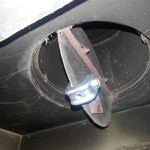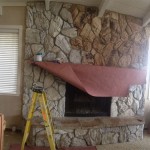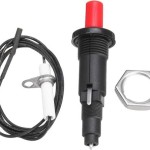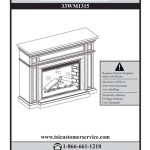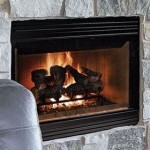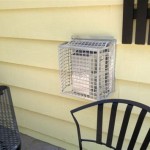Fireplace Protection for Toddlers: Ensuring a Safe Home Environment
Fireplaces provide warmth and ambiance, especially during colder months. However, they also present potential hazards to toddlers, who are naturally curious and lack the understanding of danger. Protecting young children from fireplace-related injuries requires a proactive approach, combining physical barriers with parental education and vigilance. This article outlines critical strategies for creating a safe environment around fireplaces when toddlers are present.
Toddlers are particularly vulnerable to burns from hot surfaces, including the fireplace itself, surrounding bricks or stone, and the glass doors often found on modern units. Additionally, the sharp edges and corners of a fireplace can pose a risk of bumps, scrapes, and more serious injuries if a child falls against them. Embers or stray logs can also escape the fireplace, creating a fire hazard and burn risk. A comprehensive fireplace safety plan addresses all of these potential dangers.
Installing a Fireplace Safety Gate or Screen
The most effective way to protect a toddler from a fireplace is to create a physical barrier. A fireplace safety gate or screen provides a sturdy and reliable safeguard, preventing children from accessing the fireplace area altogether. These barriers are specifically designed for fireplaces and come in various styles and sizes to accommodate different fireplace configurations. Search for options that are sturdy, heat-resistant, and securely anchored to the wall.
When selecting a safety gate, consider the following factors. The gate should be tall enough to prevent a toddler from climbing over it. The material should be heat-resistant metal, ensuring it does not melt or become excessively hot when the fireplace is in use. The gate should also have a secure locking mechanism that is easy for adults to operate but difficult for children to manipulate. Some gates are freestanding, while others require mounting to the wall. Wall-mounted gates offer superior stability and are generally recommended for optimal safety. Prior to installation, carefully measure the fireplace opening to ensure the gate is appropriately sized. Follow the manufacturer's instructions for proper installation, paying close attention to anchoring the gate securely to the wall.
Regularly inspect the safety gate for any signs of damage or wear, such as loose screws, broken hinges, or tears in the mesh. Promptly repair or replace any damaged components to maintain the integrity of the barrier.
Addressing Hot Surfaces and Sharp Edges
Even with a safety gate in place, surfaces surrounding the fireplace can still pose a risk. Bricks, stone, and glass doors can become extremely hot during and after fireplace use. Toddlers may instinctively touch these surfaces, resulting in burns. Furthermore, the sharp edges and corners of the fireplace surround can cause injuries if a child falls or bumps into them.
To mitigate these risks, consider installing edge and corner guards along the perimeter of the fireplace. These guards are typically made of soft, impact-absorbing materials, such as foam or rubber, and adhere to the edges and corners of the fireplace surround. Choose guards that are specifically designed for fireplace use and are heat-resistant. Securely attach the guards with strong adhesive to prevent them from being easily removed by a child. Periodically inspect the guards to ensure they remain securely attached and are not damaged.
When the fireplace is in use, never leave a toddler unattended in the room. Actively supervise the child and redirect their attention away from the fireplace. Educate older children about the dangers of touching the hot surfaces of the fireplace and encourage them to help keep younger siblings away from the area. After the fire has been extinguished, continue to monitor the fireplace area, as surfaces can remain hot for several hours. Consider placing warning signs near the fireplace to remind adults of the potential burn hazards.
Additionally, explore options for reducing the surface temperature of the fireplace surround. Some homeowners choose to cover the fireplace with heat-resistant blankets or mats during use. However, it is crucial to ensure that these coverings do not interfere with the proper ventilation of the fireplace and do not present a fire hazard themselves. Consult with a fireplace professional to determine the safest and most effective options for your specific fireplace.
Preventing Fire Hazards and Controlling Embers
In addition to burns from hot surfaces, toddlers are also at risk from fire hazards associated with the fireplace. Embers can escape the fireplace, igniting nearby flammable materials, such as rugs, curtains, or furniture. Toddlers may also be tempted to play with fireplace tools, such as pokers or tongs, which can be dangerous if misused.
To prevent fire hazards, always use a fireplace screen or glass doors when burning a fire. These barriers help contain embers and prevent them from escaping the firebox. Ensure that the screen or doors are in good condition and properly installed. Regularly clean the fireplace and chimney to remove creosote buildup, which is a flammable substance that can contribute to chimney fires. Schedule professional chimney inspections and cleaning at least once a year. Store firewood safely away from the fireplace, preferably in a designated area outdoors.
Keep flammable materials, such as rugs, curtains, and furniture, at a safe distance from the fireplace. Never leave combustible items, such as newspapers or magazines, near the fireplace. Educate older children about the dangers of playing with fire and the importance of keeping flammable materials away from the fireplace. Store fireplace tools out of reach of children. Consider installing a carbon monoxide detector in the home, as fireplaces can produce carbon monoxide gas, which is odorless and deadly.
Teach children about fire safety by having regular fire drills, explain the importance of smoke detectors, and ensure they know escape routes in case of a fire. This education, combined with vigilant supervision, helps to create a safer environment for toddlers around fireplaces.

How To Childproof Your Fireplace Baby Proof

Babysafetyfoam Com Baby Proofing Fireplace Hearth Guard Bumper Pad Safety Cushion Cover Protection

Gas Heater And Fireplace Safety Babyproof Co Za

Babyproof Your Hearth And Fireplace With These Simple Tips Tricks

Fireplace Child Pet Protection Firescreen Babyproof Co Za

Childproofing A Fireplace Doctor Flue Se Michigan Nw Ohio

How To Baby Proof A Fireplace Diy Hearth Cushion Simply September

Wood Stove Gas Hearth Gate G3111g4301 G4311 Friendly Fires

Babyproof Your Hearth And Fireplace With These Simple Tips Tricks

Related Posts

